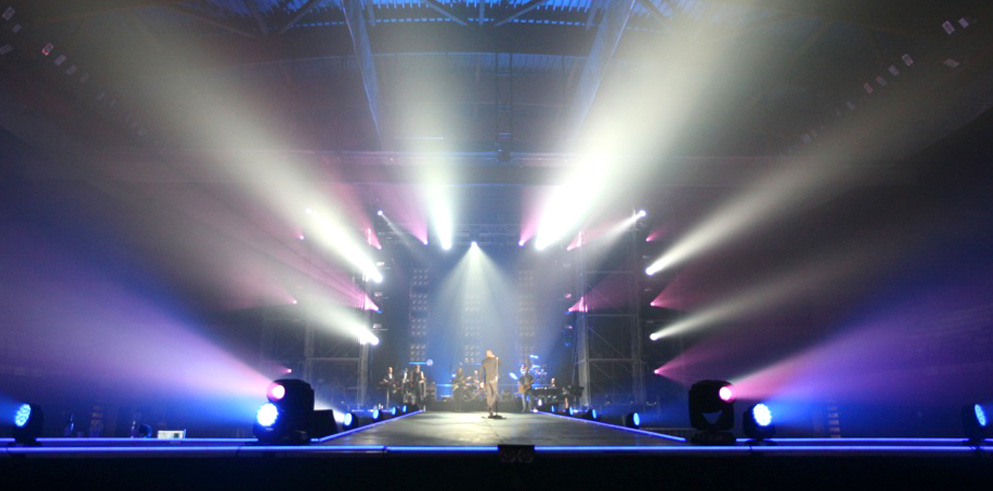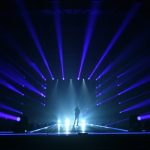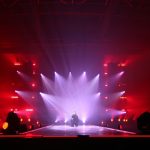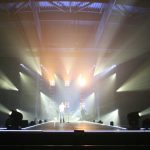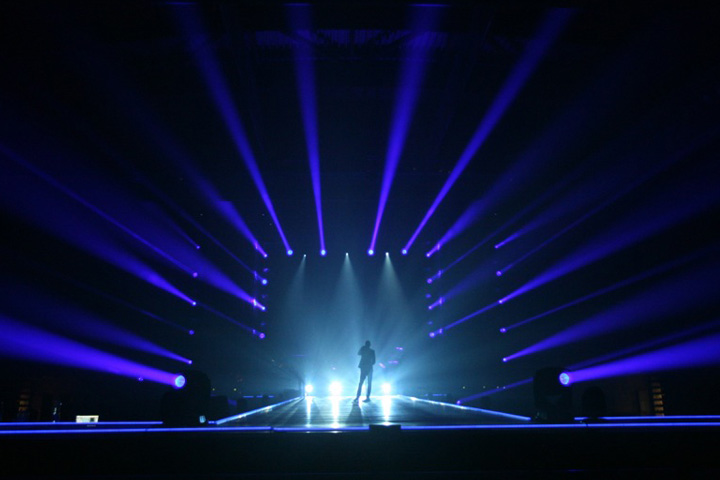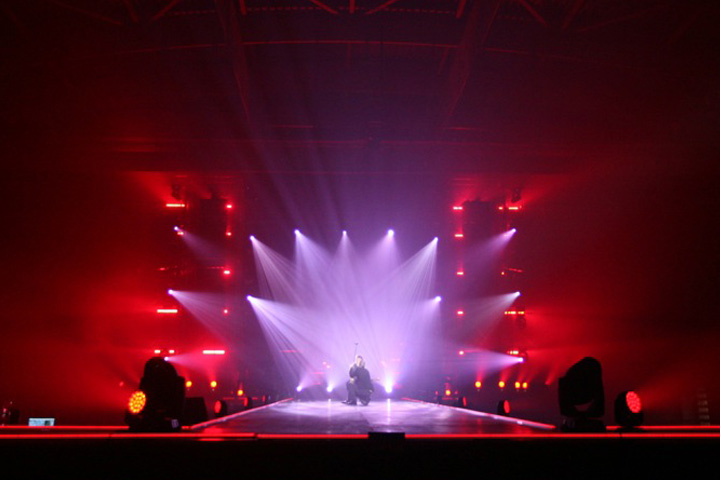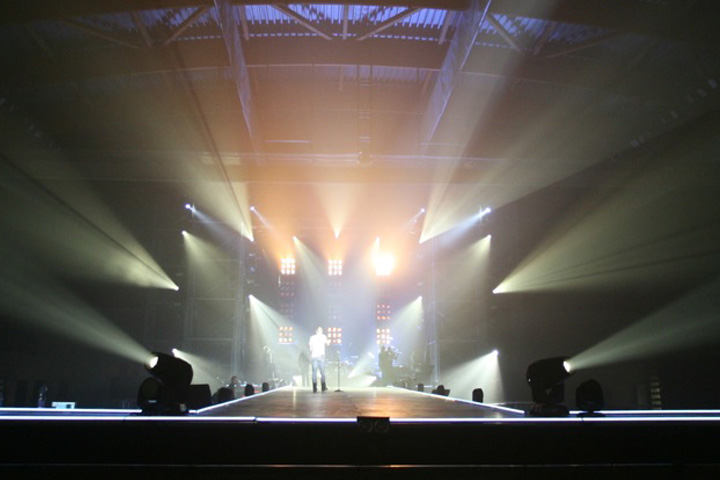Biagio Antonacci’s autumn tour consists of over twenty concerts from North to South Italy, from October to Christmas. Lighting designer Francesco De Cave has used equipment composed almost exclusively of Clay Paky lights, including 24 Alpha Spot HPE 1500s and 24 Alpha Beam 1500s. We asked him to reveal some of the secrets behind his lighting design for this production.
What guidelines did you follow?
Biagio Antonacci and the production manager were very precise. They wanted a limited size stage, which was easy to manage during the various moves and in different locations. They also wanted there to be a catwalk so that Biagio Antonacci was always in full contact with his audience. We chose not to use a background LED wall, and to minimize the décor and achieve everything with the lights. We therefore built two large cages on either side of the stage, which contained the entire sound system. These cages were fully illuminated from below from all directions so that they became part of the scenery itself and framed the performer as if in a painting. This gave the best results, with moderate expenditure in terms of cost and effort.
Did you specifically choose not to use hanging lights?
Yes, in agreement with the producer, I chose not to have trusses for hanging lights, both to make it easier to manage a tour with such frequent concerts and, above all, to give the set a generally uncluttered feel. The backlighting effect when Biagio is on the catwalk is really impressive, and could only be accomplished with lights on the ground.
Tell us about the lights you used.
I think we all know the Clay Paky Alpha Spot HPE 1500s. They are the best lights in the moving-head spotlight category, with a host of effects and functions that provide numerous creative opportunities. I was very impressed with the Alpha Beam 1500s. They are excellent versatile lights. I also use them as washlights, because they have various frost options. I work with two frost filters inside them for about half the concert, for the melodic parts, and I use them as beam lights during the “rockier” bits. They have a truly penetrating beam. I also often use them as spotlights together with gobos to project effects on the ceilings of the stadiums. I have seldom seen a more complete light than this: with just one model I could do the whole show!
Is there any feature that distinguishes your style, which is recognizable in this show too?
I love coming up with a different lighting design for each individual piece of music in the concert. I know it is sometimes a long complicated job, but I think it is a lighting designer’s duty to interpret each piece creatively, exactly as the musicians do themselves.
I also use pastel colors a lot and love being “clean-cut”, as if I were doing a TV show. You have to consider that many performers go and watch themselves on YouTube straight away, a few hours after the concert, to see how they looked. All the defects jump out on these – often non-professional – videos, which could have been minimized with a shrewd use of lighting and colors. My job is to make performers look good, not only during the concert, but also to all those who go and see them on the various online sites.
May we say that your lighting is “TV-show-like”, rather than “live”?
Absolutely. A lighting designer today must take care of the performer’s image from every angle, and therefore has to have an overall view. This is why I have developed skills in all areas of my profession, including all aspects of lighting design during live shows and as a director of photography for the TV. A TV setup always ensures a good photographic image. I also manage the video components and LED walls myself, because I consider them light sources in all respects. I follow the followspots, am a programmer and lighting operator, and even control the desks during live concerts. I want to have full control over all the parameters, because they give me a better overview and ensure I get the results I want.
How do the lighting needs on a tour of indoor stadiums differ from those on a tour of outdoor venues?
From the point of view of lighting, it is certainly preferable to be indoors, because there are far more places to fix the light beams at various heights, such as on ceilings and walls. Furthermore, you do not have to take the “wind variable” into consideration, which in some cases makes your smoke fly away and kills the effect you expected. Not to mention adverse weather, which sometimes forces you to work in really poor conditions.
On the other hand, you may be limited by the different shapes and surfaces in the various locations, which occasionally oblige you to change the rigs on the fly, sometimes considerably. However, as I explained before, we chose a practical easy-to-build rig on this tour, that was the same concert after concert.
How do you get on with the companies that provide and install lighting?
I have an excellent relationship with everyone. Agorà are always very cooperative. I could count on their rapid contribution for all technical aspects and for installation. Marco Comencini and Emanuele Vanghelatos were my precious lighting design assistants. I would like to thank them, along with gaffers Vittorio Graziosi and Alex Possi, and rigger Andrea Basta. They are all very professional guys who put a lot of passion into their work.
As to Clay Paky, the results of their cutting-edge technology are there for everyone to see. The service and support they offer are also excellent: promptness on every occasion, even for bulb replacement. It is nice to know you can always count on the support of a serious professional company.
Francesco de Cave’s curriculum vitae also includes Laura Pausini, Tiziano Ferro, Giorgia, Ramazzotti and Amici in Tour, and countless other important live, television and architectural events. What are your future plans?
I have many, but I never talk about things too far off in the future. I can only say that I will go to China later this year for the last episode of the Chinese version of the X Factor. They intend to do a large-scale show, as we are used to seeing, but they want the management of an expert lighting designer who knows how to coordinate everything. Luckily, from this point of view, we still have a lot to teach!
